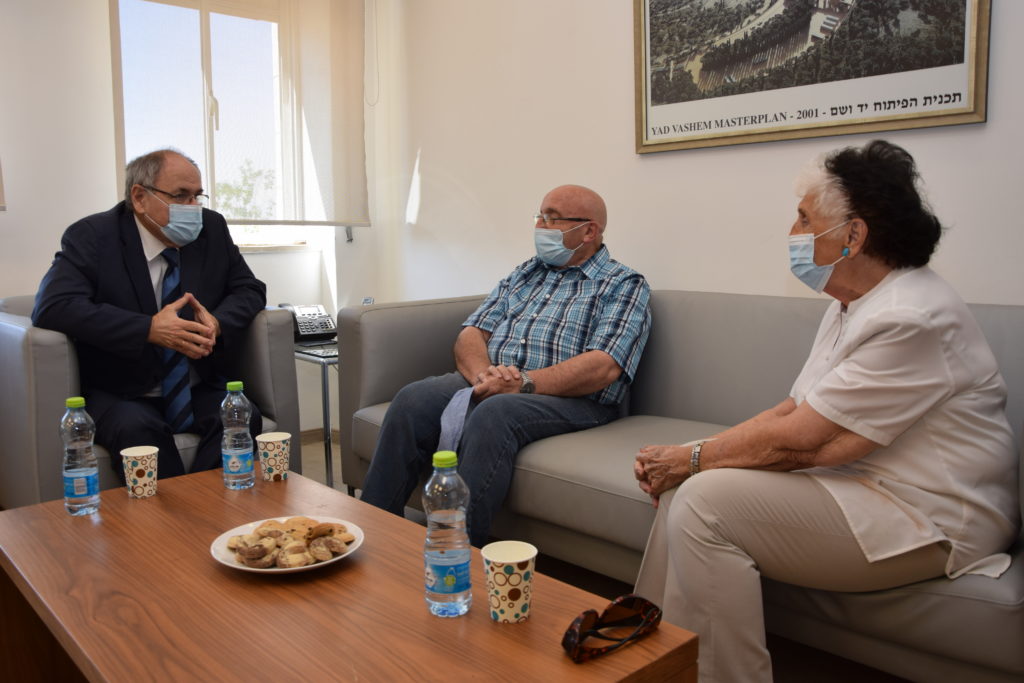Opinion
Holocaust education
Shaping collective and individual memory – together
In Short
As the chairman of Yad Vashem, the World Holocaust Remembrance Center, I feel a great responsibility placed on my shoulders: to ensure that the memory of the Holocaust and its atrocities are not forgotten to the annals of history, and that the voices of the victims of the Shoah and its survivors continue to be heard – lest history dare repeat itself.
By the beginning of 1942, much of Europe was under German occupation. Just a few months prior, during the previous spring, German troops had invaded the Soviet Union. Mobile killing units known as Einsatzgruppen swept across vast territories of Eastern Europe, while the first of the infamous factories of death were only just starting their nefarious operations and the Jews of Europe were being starved in cramped, disease-infested ghettos.
On Jan. 20, 1942, the top German Nazi leadership met at a lakeside villa in the pastoral village of Wannsee. The 90-minute logistical coordination meeting (widely known as the Wannsee Conference), codified the plan to annihilate the Jews of Europe. After years of antisemitic propaganda, legislation and persecution, the Nazi German genocidal agenda, or the “Final Solution,” had begun.


Yad Vashem
Eighty years later, we are witnessing a sickening resurgence of violent antisemitic attacks and expressions of Holocaust denial and distortion. As the chairman of Yad Vashem, the World Holocaust Remembrance Center, I feel a great responsibility placed on my shoulders: to ensure that the memory of the Holocaust and its atrocities are not forgotten to the annals of history, and that the voices of the victims of the Shoah and its survivors continue to be heard – lest history dare repeat itself.
Like so many Jews, I am no stranger to Holocaust history. My father’s family fled Europe in 1920, in the wake of anti-Jewish pogroms, seeking a better life. Growing up in Buenos Aires, Argentina, I remember hearing the stories of the “Sordei Hashoah,” Holocaust survivors. There, we both respected and were inspired by the survivors, who rebuilt their lives and contributed to society in ways none of them could ever have imagined during the dark days of the Shoah.
There are three critical foundations of Holocaust remembrance and education. Without marking the specific events of the Holocaust, such as the Warsaw Ghetto Uprising, the terrible massacre at Babi Yar or the escape attempt from Sobibor, the history of the Holocaust will fade. Without meaningful and accurate Holocaust educational and awareness activities in our classrooms and communities, the world will slowly forget the meanings of the Shoah and its relevance to today’s society. And without disseminating the personal stories and testimonies of the Holocaust survivors and victims, their messages and warnings will be lost forever.
Our mission is both simple and critical: Just as for millennia the Jewish people have preserved the memory of the Exodus from Egypt and thus its identity and moral compass, we have an eternal duty to preserve the legacy bequeathed to us by the victims and the survivors of the Shoah.
Even before COVID-19 began to wreak its global havoc almost two years ago, people were receiving most of their information from new media sources. For some, especially the younger generations, reading books and articles, either in the classroom or as a leisure activity, was an activity resigned mainly to the past. Once the pandemic hit, this phenomenon became even more pronounced. Now, many schools remain all but locked down, personal gatherings severely disrupted and global travel spontaneously restricted – and social media reigns supreme. As a result, visits to Holocaust-related memorials, museums and authentic sites, where the incarceration and murders of the Jews took place, have been limited and sometimes entirely suspended, while uninformed soundbites gain millions of viewers every day. How can Holocaust education and remembrance be meaningfully promoted while adhering to government mandates as well as the pressures of the “on-demand” generation?
Fact-based and age-appropriate Holocaust education is key to ensuring that the Holocaust remains relevant to every generation. But Holocaust teaching comes with its own unique challenges. Teachers must be better equipped to impart the sensitive material. They need more dedicated hours and a wider knowledge base to address the subject, in all of its intricacies, avoiding irrelevant and inaccurate comparisons to other genocides. Some educators are only able to touch on the subject through lack of effective and detailed lesson plans that place the events in the right context, by examining the pre- and postwar periods.
We must not be deterred by this newfound reality. As the survivor generation sadly dwindles, we must redouble our efforts to tackle misinformation, historical whitewashing and new threats against the Jewish people in both speech and action. Antisemitism will never be diminished through silence. With international partnerships, alliances and coalitions, we can push these alarming phenomena back to the margins of our global society.
By shaping the way we preserve the memory of the Holocaust and disseminating its messages worldwide, I will continue Yad Vashem’s commitment to connecting the past, present and future. Chairing this esteemed institution is more than a title; it is a life mission that I am determined to fulfil with the support and partnership of you all.
Dani Dayan is the chairman of Yad Vashem. Previously he served as consul general to New York from the State of Israel.












